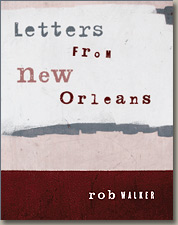
Picking up, then, on The Hot 8, a topic I started on the other day:
One of the things that interested me about The Hot 8 that time we saw them back in 1998, is that at no point in the evening were there eight people in the band. I think there were five musicians when the evening started, and maybe seven by the end. Presently, according to the band’s official site, the Hot 8 has 10 members. From what I know of the street brass bands, this isn’t so unusual: membership tends to be a bit fluid. There’s usually a leader, a certain number of core members, and then a rotating crop of people who may or may not show up for a given gig.
Jelly Roll Morton talked about parade bands in his 1938 interviews with Alan Lomax (discussing the first decade of the 20th century or thereabouts). So did various other musicians from that era who Lomax interviewed in 1949. Membership was pretty casual back then, too. To take one example: Johnny St. Cyr was at various times in the Superior, Tuxedo, and Olympia brass bands in the early 1900s. (Lomax asks questions about the street bands as if they were something that had long since disappeared — but of course the brass bands were still playing parades and funerals when he was doing his interviews, and they’re still doing it now.)
The footage in The Hot 8 (the documentary I wrote about last week) was, I gather, mostly shot in 1999, and it’s possible that at the time there were exactly eight members, as the film implies. In any case, of the eight members in the documentary, only three are in the band today. Two of the members highlighted in the film (and one other who wasn’t) are dead — one was killed by police in a controversial incident last year — and a third is said to be in prison.
On the other hand, the Hot 8 is a pretty successful outfit. They’ve played all over the world, they have a CD, they were on one of the big stages at Jazz Fest this year, and they’re part of a Central Park show this summer.
It’s interesting to consider the balance between the identity of the band, and its component parts. The human, individual stories within the collective idea of The Hot 8 are amazing and often tragic — yet that collective idea somehow remains remarkably consistent. It’s even more interesting to consider the context in which that balance is being struck.
Every big city in America has its ghettos and its underclass. Often, many of those who live the toughest, most on-the-edge, and dangerous lives, are black, and that’s how it was in New Orleans. Some kids who grow up in the ghetto figure they can get out by becoming rap stars. Others focus on sports. Some end up dealing drugs. All that was true in New Orleans when we lived there, but what was amazing was that even at the turn of the 21st century, another way out was the trumpet (or other brass instrument, or drums, etc). As I’ve said elsewhere, I didn’t really expect that to be true when we moved to New Orleans. But it most certainly was (is).
So the Hot 8 holds my interest in part because within the collective identity of this sizzling brass band burning up a club or moving a parade crowd, are the stories of these individuals overcoming adversity — or failing to overcome it. Meanwhile, the audience dances, not necessarily paying attention to the idea that these are individuals at all, and whether these are the same individuals who played as the Hot 8 last week, or, for that matter, whether or not there are eight of them. I’m not criticizing such audiences, of course, since I’ve been in them, more than once. This is just the way it is.
Read Full Post »

 A couple of years ago I did some research into the song "St. James Infirmary," wrote up what I found, emailed that essay to friends and posted it on my web site (as part of a series of "Letters From New Orleans," as I was living in that city at the time). Based on the feedback, I wrote a second version of the essay, and asked for more feedback. Based on that, I wrote a
A couple of years ago I did some research into the song "St. James Infirmary," wrote up what I found, emailed that essay to friends and posted it on my web site (as part of a series of "Letters From New Orleans," as I was living in that city at the time). Based on the feedback, I wrote a second version of the essay, and asked for more feedback. Based on that, I wrote a 
